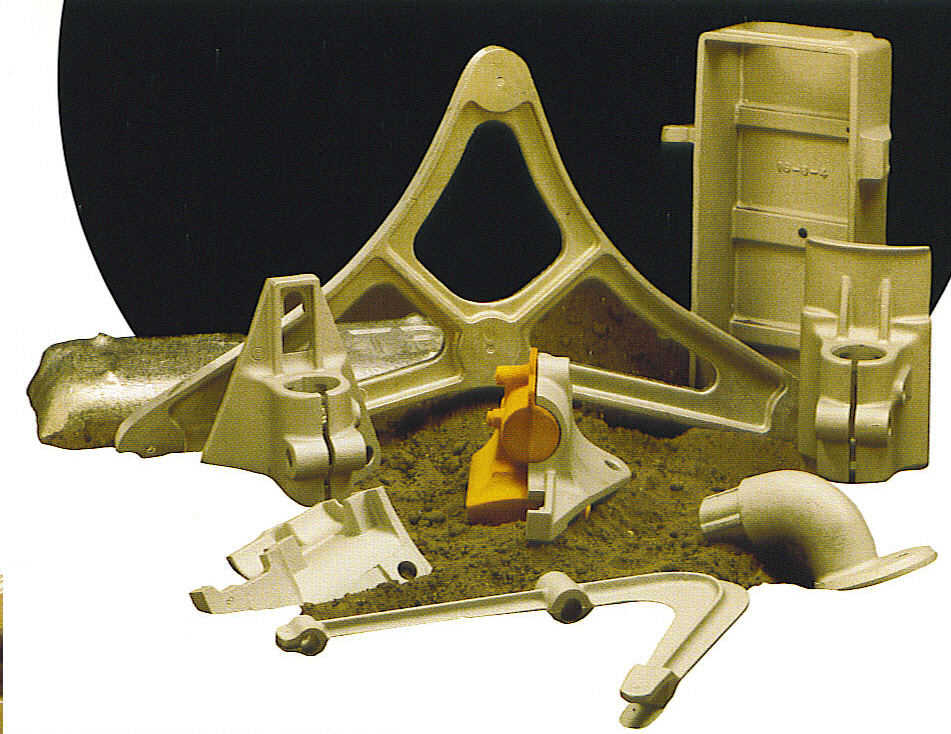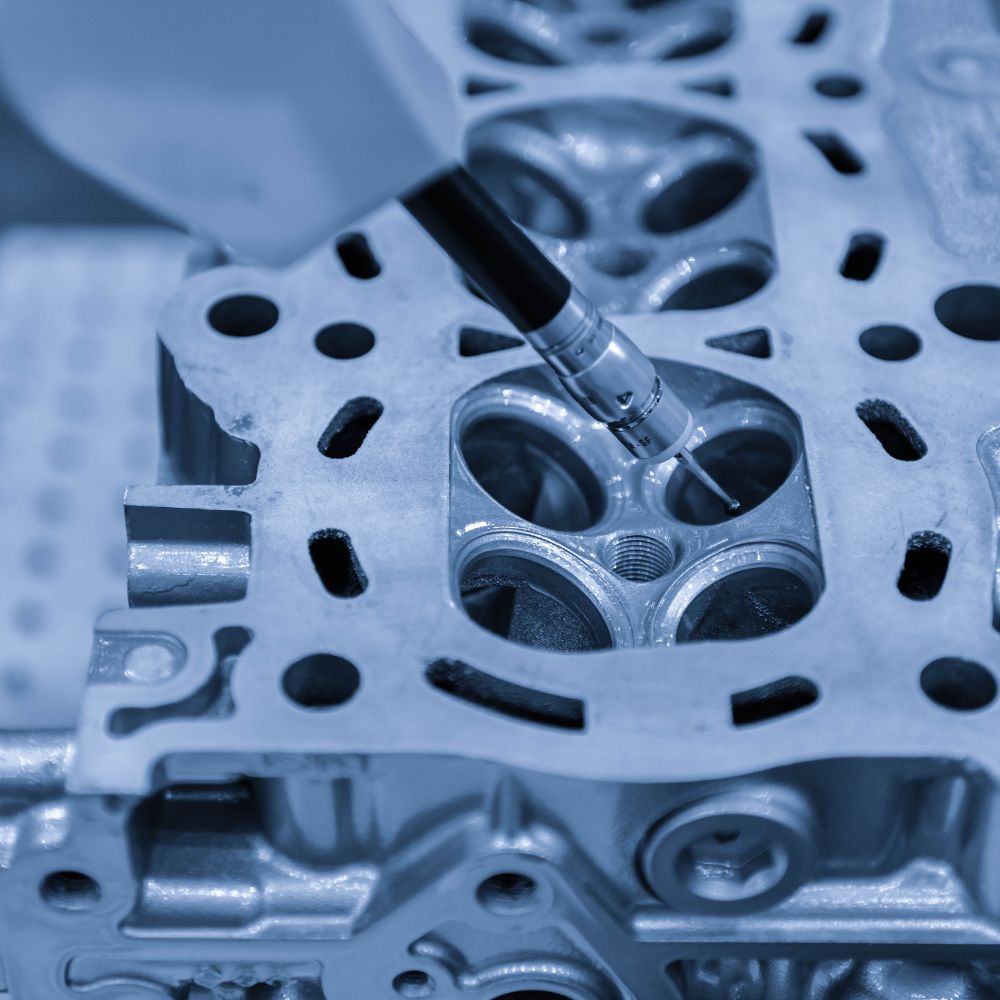5 Easy Facts About Aluminum Castings Company Described
Some Known Details About Aluminum Castings Company
Table of Contents8 Simple Techniques For Aluminum Castings Company3 Simple Techniques For Aluminum Castings CompanyThe Ultimate Guide To Aluminum Castings CompanyWhat Does Aluminum Castings Company Do?Some Known Facts About Aluminum Castings Company.Aluminum Castings Company - The FactsThe 8-Minute Rule for Aluminum Castings CompanyThe 20-Second Trick For Aluminum Castings Company
There are two key types of die spreading utilized in the aluminum spreading market: warm chamber die casting and cool chamber die spreading. The primary difference in between these techniques is just how the molten metal is delivered to the mold. In warm chamber die spreading, frequently utilized for lower melting factor steels, the melting pot is straight linked to the device, and a bettor compels the material via a gooseneck into the die dental caries.
The Single Strategy To Use For Aluminum Castings Company
In these methods, the mold and mildew is deliberately ruined or escaped in order to draw out the completed light weight aluminum casting. Common processes under the category of expendable mold and mildew spreading include (investment spreading),,, and financial investment casting. When manufacturing personalized aluminum components using expendable molds, producers put liquified light weight aluminum or aluminum alloys into the mold, which is then damaged apart to release the solidified metal component.
The is just one of the oldest and most utilized kinds of aluminum casting. It entails compacting specialized factory sand, commonly strengthened with clay or resin, around an exactly crafted reusable pattern that figures out the shape and interior information of the finished light weight aluminum product. The pattern system incorporates risers and vents to handle the circulation of liquified steel and to stop casting flaws such as shrinking porosity.
Aluminum Castings Company for Beginners

This mold is then preheated before the pouring of liquified aluminum or light weight aluminum alloy. As the steel fills up the covering, it records the detailed information and fine surface area coating of the mold and mildew. When cooled down, the ceramic is mechanically or chemically broken away, permitting the elimination and splitting up of individual actors parts.
Rumored Buzz on Aluminum Castings Company
Irreversible mold spreading makes use of reusable metal molds and is suitable for automation with constant top quality and less waste. Expendable mold and mildew casting uses single-use molds, like sand or foam, providing design adaptability and lower tooling costs for models or brief runs. Pass away spreading is best for generating high quantities of light weight aluminum components that call for tight tolerances, great information, and smooth surfaces.
The Toshiba Machine DC-J Series includes pass away casting equipments appropriate for light weight aluminum. Recognized for their robust building and high shot performance, these makers make sure effective and exact casting (Aluminum Melting and Casting).

While aluminum can be made use of in its pure type, it is often alloyed have a peek at this site with other metals to improve its buildings or the residential properties of the other metals. These alloys supply improved efficiency for different applications. Light weight aluminum alloys are classified into eight series, numbered from one to eight. The initial number(s) of the number indicate the key alloying component integrated with light weight aluminum.
Our Aluminum Castings Company Ideas
This alloying boosts the strength and solidity of aluminum but lowers its ductility and rust resistance. The 2000 collection alloys are testing to weld yet can be warm dealt with to boost their buildings. The 3000 collection alloys are largely alloyed with manganese. This mix improves rust resistance while providing moderate toughness.
The 4000 series alloys are alloyed with silicon, which reduces the melting factor and enhances fluidness. This makes it a preferred selection for casting, as it is simple to create in its molten state.
Not known Incorrect Statements About Aluminum Castings Company
This series is classified as a high-strength alloy, especially matched for sheet and plate applications as a result of its exceptional weldability. Its resistance to rust from acids and alkalis makes it excellent for use in rough and hostile environments (Aluminum Foundry). The 6000 collection alloys are alloyed with both magnesium and silicon, supplying an equilibrium of strength, mechanical homes, and corrosion resistance
Processing the 6000 series needs specialized and sophisticated equipment, which can be intricate and costly. This collection is recognized for its outstanding rust and oxidation resistance, as well as its convenience of finishing, treatment, and workability. The 7000 collection light weight aluminum alloys are the strongest and most resilient amongst aluminum types, with strength similar to around two-thirds of industrial-grade A3 steel.
Excitement About Aluminum Castings Company
Zinc is the main alloying element in the 7000 collection, improving the hardness of the light weight aluminum, although zinc's solidity resembles that of aluminum on the Mohs range. The 8000 collection aluminum alloys are mostly alloyed with tin, in addition to little amounts of copper and nickel (Aluminum Castings). While these alloys use reduced strength contrasted to various other series, they stand out in machinability and put on resistance
Aluminum cast heatsinks are electrically conductive, enabling them to be grounded effectively. They are usually cast with integrated features that reduce the need for additional procedures, such as added machining or setting up, causing further expense financial savings. Light weight aluminum spreading is regularly utilized to produce brackets for both durable commercial devices and home devices.
Not known Details About Aluminum Castings Company
The single-piece building of aluminum brackets improves their strength and durability, minimizing the possibility of failing. If holes are required, they can be included directly in the casting mold and mildew, reducing the demand for post-production ending up (https://gravatar.com/warma26d710fbf9). Manufacturers have actually progressively embraced light weight aluminum spreading for golf equipment because of its toughness, stability, and flexibility in shaping